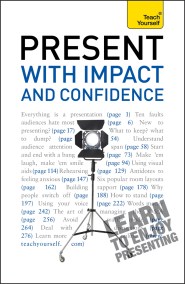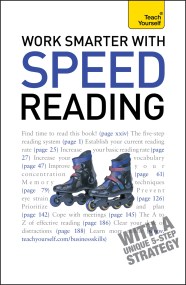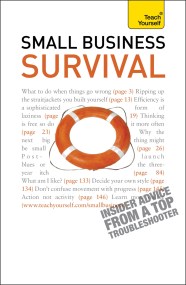Get Started In Shorthand: Pitman 2000
On sale
30th April 2010
Price: £16.99
Selected:
Paperback / ISBN-13: 9781444102963
Is this the right book for me?
Gain a working vocabulary in Pitman 2000 in clear and easy stages
Shorthand is a valuable asset to everyone, young or old, in private or business life and Pitman 2000 is a system designed for easy learning, with a speed potential to meet the demands of a modern fast-moving world. Get Started in Shorthand: Pitman 2000 is a beginner’s guide to the basic theory and will give you a working vocabulary in Pitman 2000 in clear and easy stages.
Each of the main sections contains a new set of sounds and rules, short forms, phrases and exercises, including audio exercises online. Review exercises give you the opportunity to consolidate material already covered, and a key to the exercises enable you to measure your rate of progress throughout the book. Written to make self-tuition both simple and stimulating and based on original Pitman Publishing material, this authoritative book is indispensable to anyone seeking a first or refresher course in Pitman 2000.
Get Started in Shorthand: Pitman 2000 includes:
Chapter 1: Basic strokes
Consonants
Vowels
Position of outlines
Circle S
SES circle
The suffix -ING
Tick THE
Punctuation
Chapter 2: Consonants and vowels
Seven more consonants
Stroke S
Past tense of regular verbs
The consonant R
Unstressed vowels
Chapter 3: Halving strokes
Halving to add T
Halving to add D
When not to halve
Chapter 4: Common combinations
The L hook
The final syllables -TL or -DL
L hook with circle S
Plural -INGS
Chapter 5: Third-place vowels
Dots
Dashes
Chapter 6: Complex vowel sounds
Dipthongs
Triphones
SES circle
Chapter 7: S and T in combinations
The ST loop
The -STER loop
M and N with a following T or D
S and Z
Diphones
ZH
H
Chapter 8: The R hook
R hook on straight strokes
Stress rules
Chapter 9: Hook N
Final hook N to curved strokes
Final N hook to straight strokes
Chapter 10: Suffixes and compounds
Suffixes
Compound consonants
Chapter 11: L and R hooks with curves
Initial hooks to curved strokes
Stress rules with R and L hooks
Reverse forms of initially hooked curves
Chapter 12: More hooks
-SHUN hook
F/V hook
Chapter 13: Speed strokes
Doubling
CON- or COM-
Chapter 14: Last words
Figures
Negative words
Suffix -SHIP
Disjoining
Omission of a consonant
Vowel insertion
Learn effortlessly with a new easy-to-read page design and interactive features:
Not got much time?
One, five and ten-minute introductions to key principles to get you started.
Author insights
Lots of instant help with common problems and quick tips for success, based on the author’s many years of experience.
Test yourself
Tests in the book and online to keep track of your progress.
Five things to remember
Quick refreshers to help you remember the key facts.
Try this
Innovative exercises illustrate what you’ve learnt and how to use it.
Access the audio for this course for free by downloading it to the Teach Yourself Library app or streaming it on library.teachyourself.com
Gain a working vocabulary in Pitman 2000 in clear and easy stages
Shorthand is a valuable asset to everyone, young or old, in private or business life and Pitman 2000 is a system designed for easy learning, with a speed potential to meet the demands of a modern fast-moving world. Get Started in Shorthand: Pitman 2000 is a beginner’s guide to the basic theory and will give you a working vocabulary in Pitman 2000 in clear and easy stages.
Each of the main sections contains a new set of sounds and rules, short forms, phrases and exercises, including audio exercises online. Review exercises give you the opportunity to consolidate material already covered, and a key to the exercises enable you to measure your rate of progress throughout the book. Written to make self-tuition both simple and stimulating and based on original Pitman Publishing material, this authoritative book is indispensable to anyone seeking a first or refresher course in Pitman 2000.
Get Started in Shorthand: Pitman 2000 includes:
Chapter 1: Basic strokes
Consonants
Vowels
Position of outlines
Circle S
SES circle
The suffix -ING
Tick THE
Punctuation
Chapter 2: Consonants and vowels
Seven more consonants
Stroke S
Past tense of regular verbs
The consonant R
Unstressed vowels
Chapter 3: Halving strokes
Halving to add T
Halving to add D
When not to halve
Chapter 4: Common combinations
The L hook
The final syllables -TL or -DL
L hook with circle S
Plural -INGS
Chapter 5: Third-place vowels
Dots
Dashes
Chapter 6: Complex vowel sounds
Dipthongs
Triphones
SES circle
Chapter 7: S and T in combinations
The ST loop
The -STER loop
M and N with a following T or D
S and Z
Diphones
ZH
H
Chapter 8: The R hook
R hook on straight strokes
Stress rules
Chapter 9: Hook N
Final hook N to curved strokes
Final N hook to straight strokes
Chapter 10: Suffixes and compounds
Suffixes
Compound consonants
Chapter 11: L and R hooks with curves
Initial hooks to curved strokes
Stress rules with R and L hooks
Reverse forms of initially hooked curves
Chapter 12: More hooks
-SHUN hook
F/V hook
Chapter 13: Speed strokes
Doubling
CON- or COM-
Chapter 14: Last words
Figures
Negative words
Suffix -SHIP
Disjoining
Omission of a consonant
Vowel insertion
Learn effortlessly with a new easy-to-read page design and interactive features:
Not got much time?
One, five and ten-minute introductions to key principles to get you started.
Author insights
Lots of instant help with common problems and quick tips for success, based on the author’s many years of experience.
Test yourself
Tests in the book and online to keep track of your progress.
Five things to remember
Quick refreshers to help you remember the key facts.
Try this
Innovative exercises illustrate what you’ve learnt and how to use it.
Access the audio for this course for free by downloading it to the Teach Yourself Library app or streaming it on library.teachyourself.com
Newsletter Signup
By clicking ‘Sign Up,’ I acknowledge that I have read and agree to Hachette Book Group’s Privacy Policy and Terms of Use














